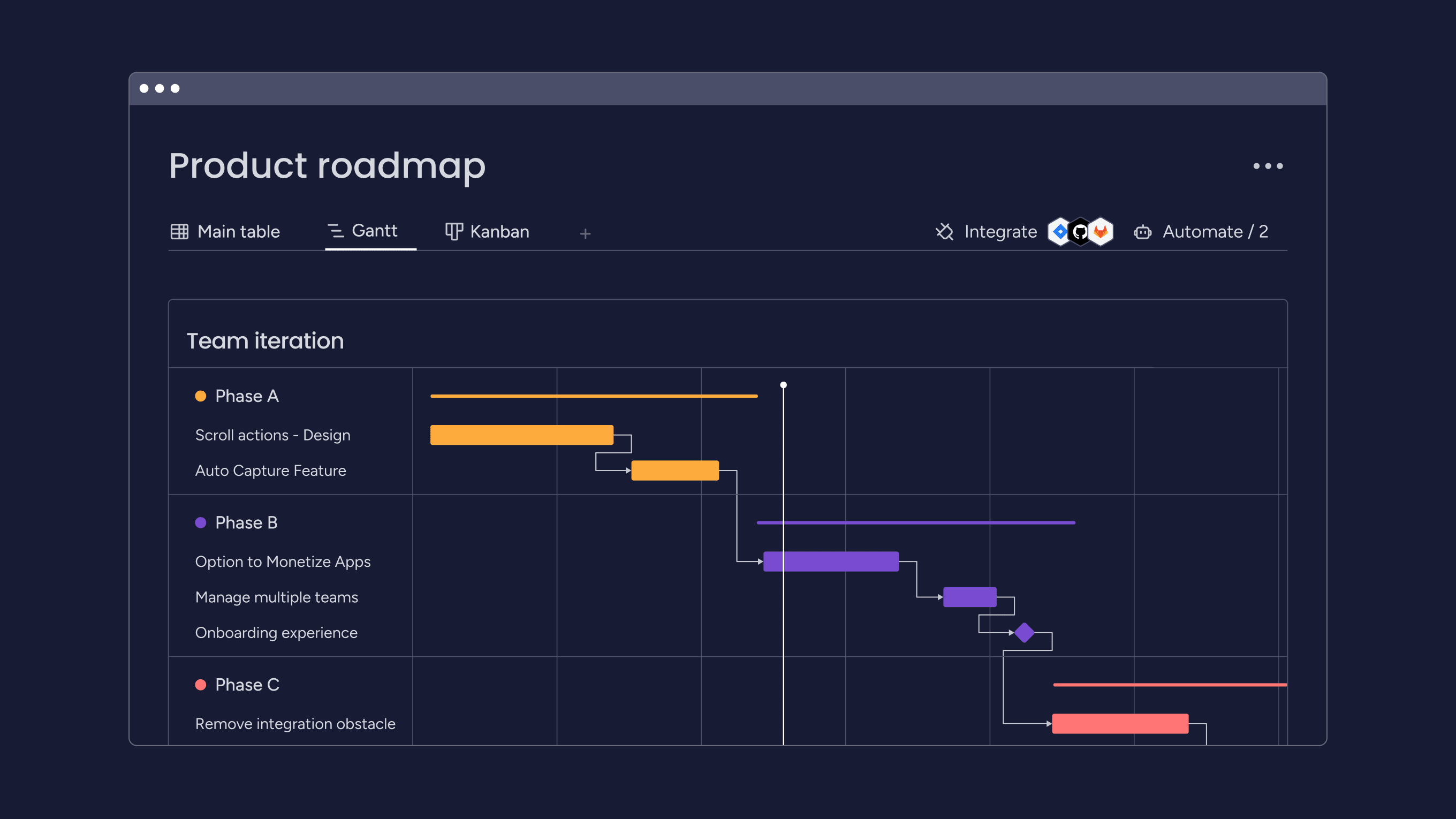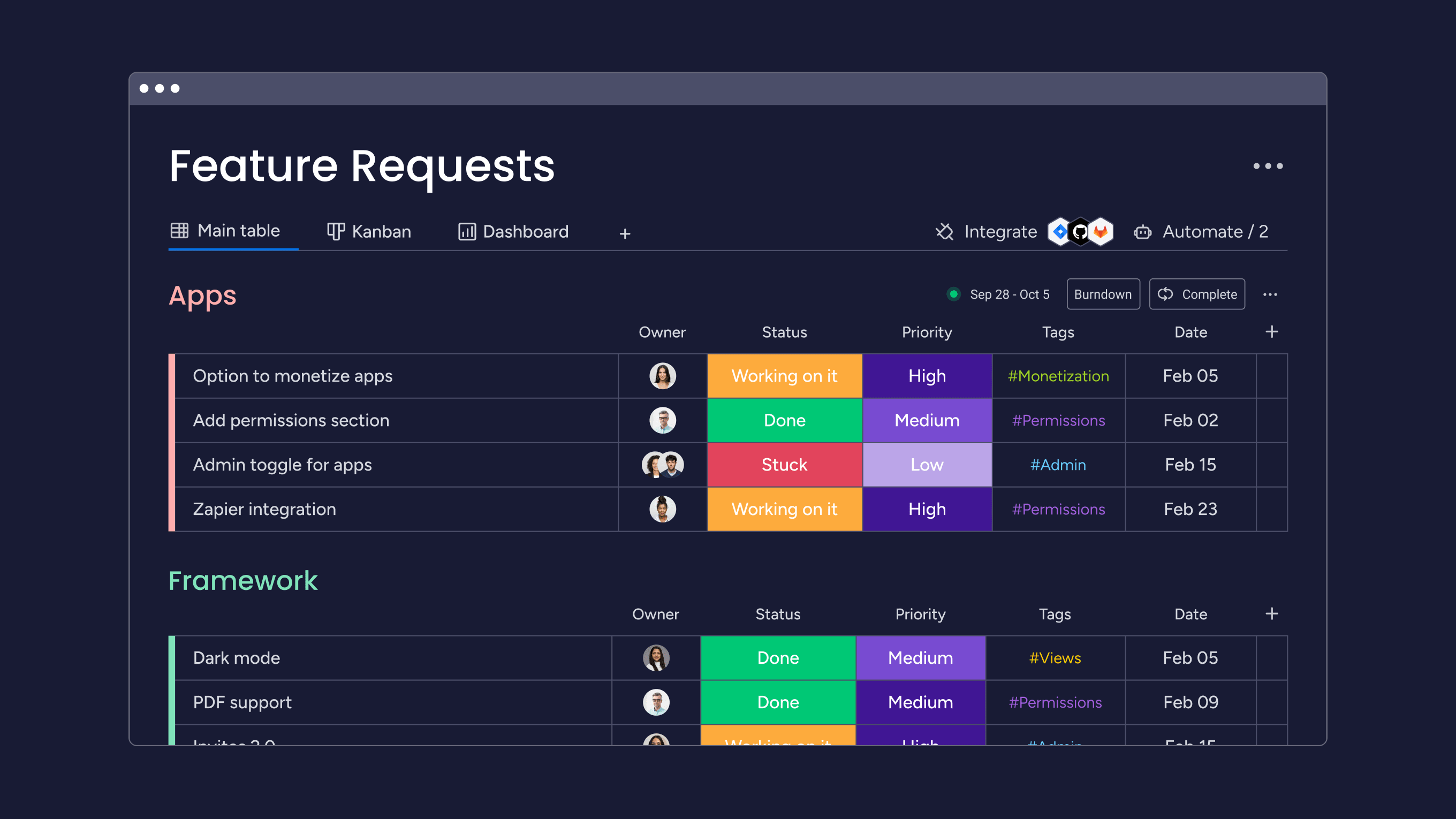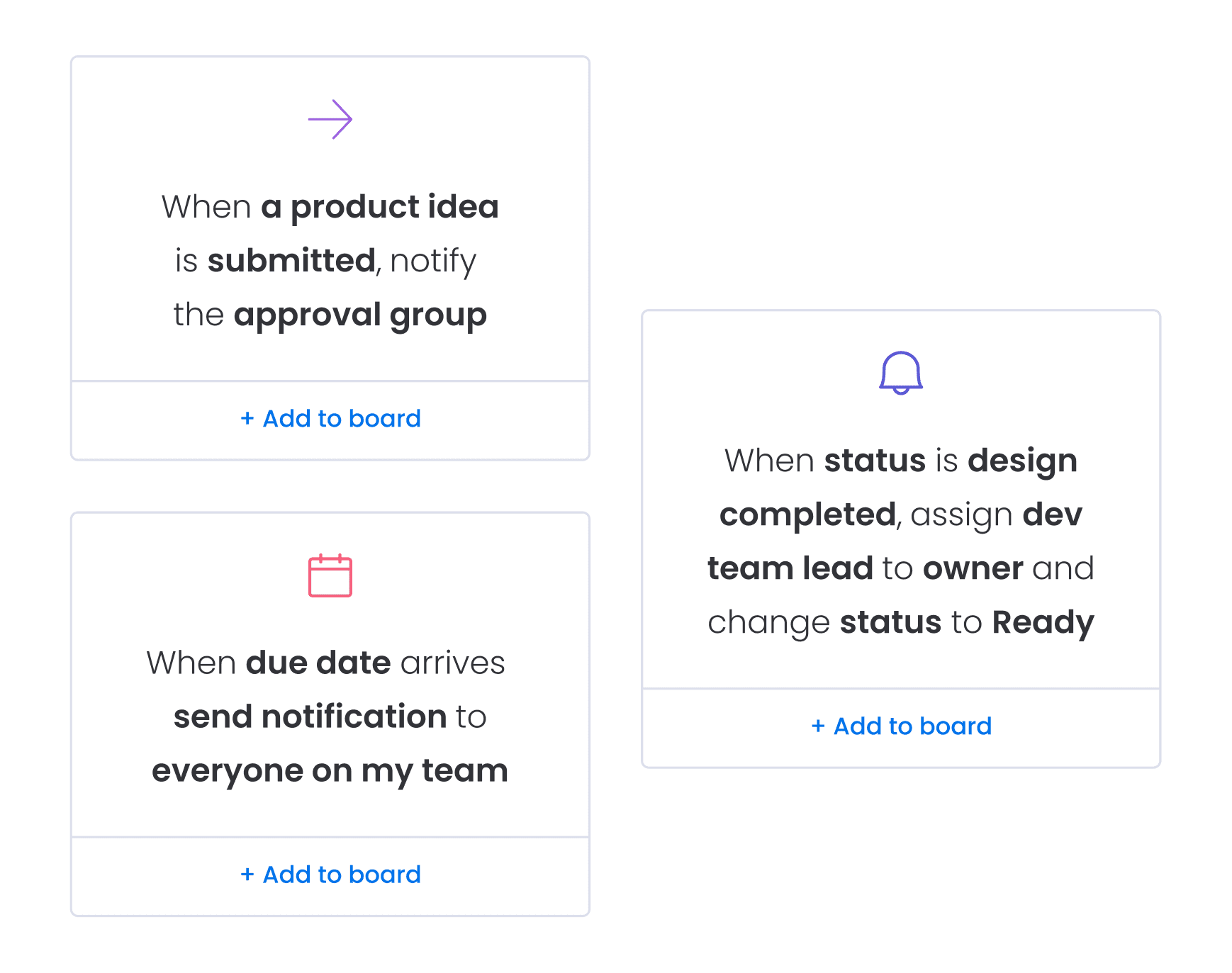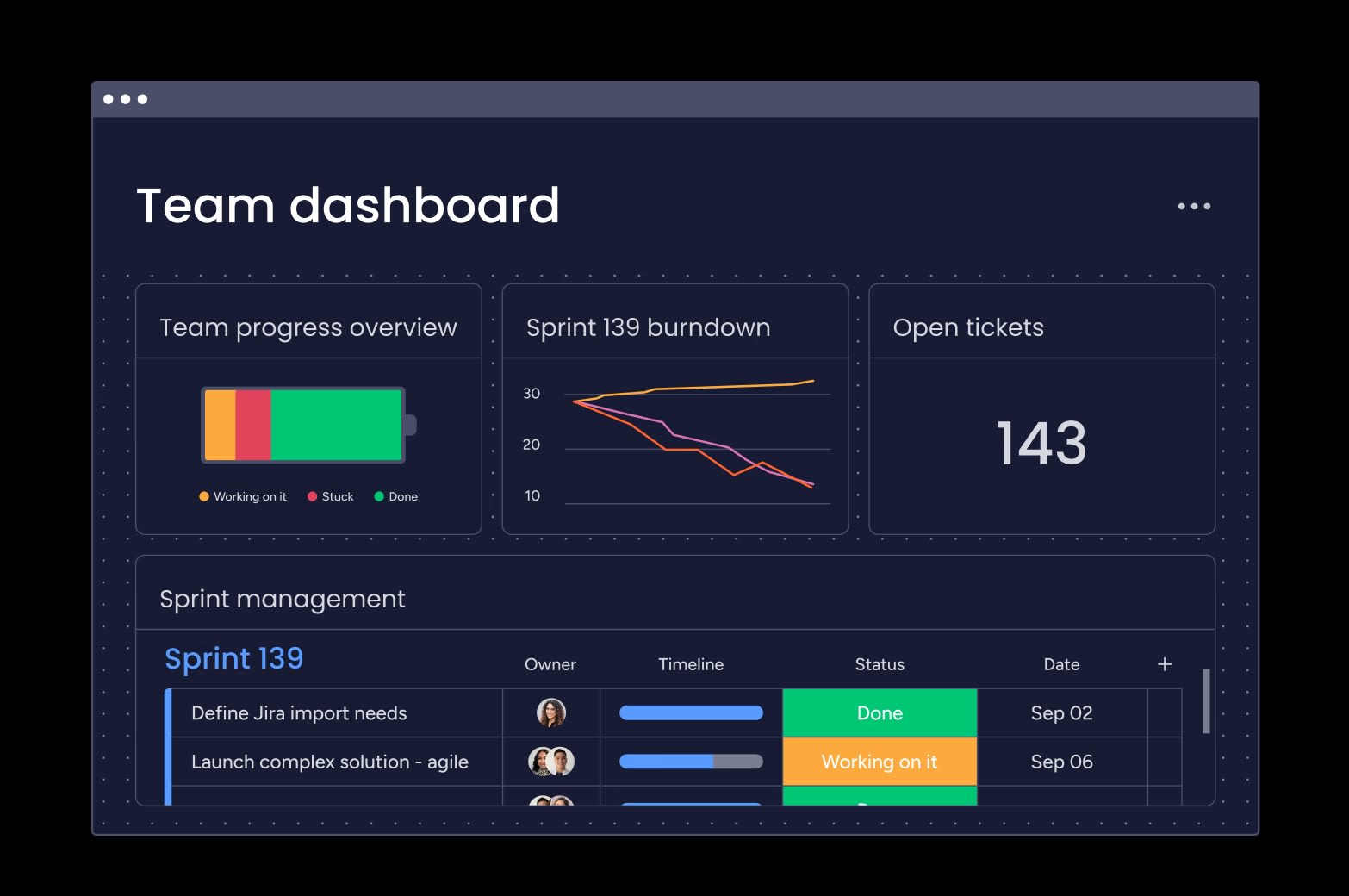Until 2007, Nokia had dominated the global mobile phone market for a decade, offering devices with strong battery lives, iconic ringtones, customizable covers, and, of course, Snake. Nokia’s cell phones were the products that mattered.
But that all changed when Apple CEO Steve Jobs unveiled three new products bundled into one neatly packaged iPhone. Apple had found a way to stand out against Nokia by offering a single device that could do three clear things. It was a widescreen iPod with touch controls, a mobile phone, and an internet communications device. The response was exceptional, and the market has never looked back.
This guide explores the importance of product differentiation, different types, and how to manage your differentiation strategy in monday dev.
Try monday devWhat is product differentiation?
Product differentiation makes your product or service stand out from others in the market. Imagine a range of mops on display in your local store. They all serve the same purpose of cleaning your floors, but each has unique features. Some may have a detachable handle or offer a speed clean; others have a special material for better absorption.
Whatever your product, implementing one or more of the following differences could set it apart from the competition:
- Quality: Superior materials or craftsmanship could define your product.
- Pricing: Competitive pricing offers customers better value for their money, while premium pricing attracts customers looking for luxury.
- Features: Unique design features enhance the functionality or aesthetics of your product.
- Performance: Products that offer improved efficiency compared to others in the market promise great value for money.
- Ethics: Products made from recycled materials, or that aren’t tested on animals could appeal to your customers’ ethical values.
Why is the differential of a product important?
While your product must always meet your customers’ needs and expectations, creating another version of the same is boring and prevents you from being known for one specific thing. Here are the benefits you can expect by committing to product differentiation:
Increased market share
Unless you’re the only brand offering a specific product, you’ll be fighting to gain market share. For example, at the start of 2010, Nokia still had a healthy market share of 38.8% but quickly lost ground to its competitors. By the beginning of 2012, Apple and Samsung had achieved a respective market share of 23% and 28.8%, and Nokia’s share was now worth 7.8%.
Greater customer loyalty
Repeat product purchases are a marketer’s dream. Investopedia reports that while there’s only a 13% chance of persuading a prospective customer to buy from you, this increases to 60-70% when customers have already purchased a product from you. This loyalty is even easier to achieve with product differentiation. If your customers can’t find your product’s features, pricing, or design elsewhere, of course they’ll continue to buy from you.
Premium pricing
Premium pricing strategies are all about status and exclusivity, where customers are proud to be someone who can afford your higher-priced product rather than a bog-standard version from a competitor.
Premium pricing isn’t limited to designer clothing or luxury cars—it can also apply to everyday products such as skincare, food, and beverages. For example, your customer might prefer a $100 tub of moisturizer rather than a discount store alternative. To justify your premium pricing, you’ll need to highlight your product differentiators, which could be as simple as providing sleeker packaging, or using higher grade ingredients.
Enhanced brand recognition
When a customer thinks of a specific product, you want them to think of your brand first. Through product differentiation, you have a better chance of achieving this level of brand recognition. For example, some products are so popular they have become household names. Think “hoovering” instead of vacuuming or “googling” instead of searching the internet.
Exceptional brand recognition takes a collaborative effort from multiple areas of your business, including product developers, marketing, sales, and customer success teams.
Try monday devWhat are the main types of product differentiation?
There are three main ways you can differentiate your product. Consider which of the following strategies is right for you:
Vertical differentiation
Customers who rank products based on scales like price, design, performance, or quality use vertical differentiators. For example, one person shopping for a car may have a maximum budget of $10,000. They will vertically differentiate cars that fall within this category. Another person may require a family car with room for three car seats across the back. They will choose a design-based vertical differentiator to ensure they select a vehicle with enough space in the rear.
Horizontal differentiation
In contrast, customers who make purchasing decisions without any form of scale or measurement use horizontal differentiation to decide between two or more products. For example, if they’re buying a new car, the final decision might come down to a color preference. There is no measurable advantage to buying a green or blue car; this is merely a horizontal differentiator that will change from person to person, or a specific market segment.
Mixed differentiation
Mixed differentiators are simply the overlap between your vertical and horizontal strategies. Car manufacturers who want to appeal to family car owners with a specific budget, and who also want to view a range of color options will use mixed differentiation. With this approach, manufacturers seek to create a product that combines both horizontal and vertical differentiators.
Manage your product differentiation in monday dev
What makes your product different from everything else around it? And how are you communicating these differences to your target audience? monday dev offers a powerful platform to organize your product differentiation strategy, using the following features:
- Visibility: Empower your teams from product conception to launch by providing transparency in every area of the process. Teams can customize their dashboards using 25+ widgets, 36+ columns, and 27+ different views such as Kanban, Gantt charts, Timelines, and more, to see the differentiation details that matter.

- Feature requests: Capture and manage feedback from your customers and focus groups to influence your development sprints and future product updates.

- Automation: Eliminate repetitive steps from your product processes by setting up automated tasks to run in the background. Our automation recipes use triggers that kick in when a specific event occurs. For example, “When a product idea is submitted, notify the approvals team.“

- Integrations: Sync key tools with monday dev, providing your teams with all the information they need. For example, your marketing teams may require integration with MailChimp to aid a new product feature campaign, while your developers may require access to GitLab. monday dev integrates with 72+ different tools to keep your data streamlined.

- Collaboration: Enable collaboration with the many different teams involved in product differentiation. monday dev is the perfect place for these teams to come together for brainstorming sessions, collaborate on knowledge management, and hold key discussions about the trajectory of your product lines.

Professional services firm Genpact is one example of a company that has used monday.com to accelerate team collaboration. Running 24 cross-channel marketing campaigns simultaneously, Genpact found it impossible to achieve the visibility its teams needed. After switching to the monday.com Work OS platform, the foundation on which monday dev is built, Genpact has experienced a 40% increase in cross-team collaboration, 100% elimination of spreadsheets, and 20-30% reduction in emails across the department.
Ready to gain similar results with your collaborative product differentiation strategy? Take a free trial of monday dev today.
Try monday devFAQs
What are differentiated products?
Differentiated products are distinguishable from other products in the market based on unique features, design, quality, or performance. This differentiation allows them to appeal to specific market segments and stand out among competitors.
What role can advertising play with respect to differentiated products?
Advertising is crucial in communicating a product's unique features to potential customers. Through effective advertising campaigns, companies can build brand recognition and educate consumers about the benefits of their product compared to others in the market. This can help increase sales and attract a loyal customer base.
How can product differentiation be achieved?
Companies must understand their target audience's specific needs and preferences to determine the most effective approach for differentiating their product. With the support of platforms like monday dev, companies can streamline the product differentiation process by facilitating collaboration, automating tasks, and providing visibility into the product development process.
 Get started
Get started 
